“I reached the point of thinking there were no more masterpieces to discover, until I saw I Know Where I’m Going!“
—Martin Scorsese
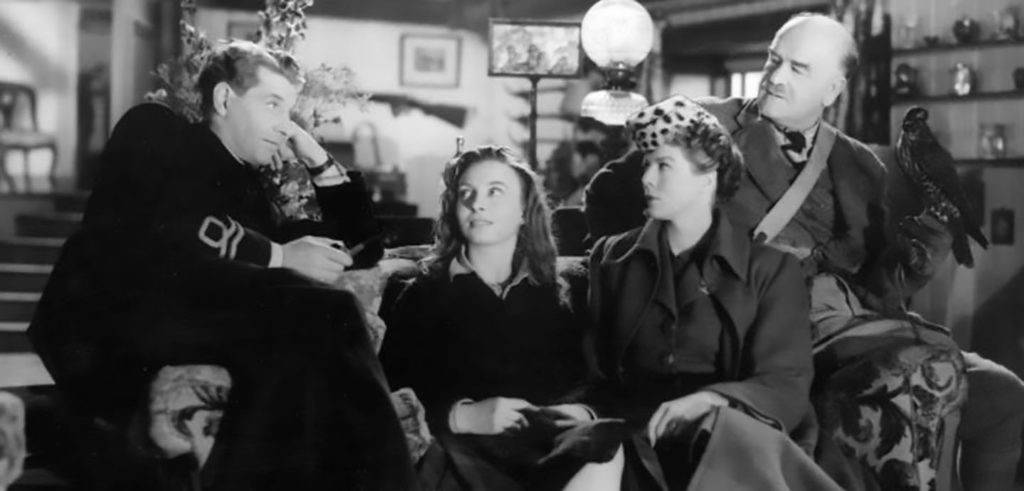
Perhaps you share this feeling: Why doesn’t everybody love the same films that I do? (or books or television shows, for that matter). As a way of setting the world right, I’m going to offer this love letter (as my friends, family, and colleagues have heard before) positing why I Know Where I’m Going! (or IKWIG), Michael Powell and Emeric Pressburger’s black and white, mysterious, powerful—and sometimes cynical—masterpiece, is the best film you never saw.
A subversive romance
If IKWIG is categorized as a romance, it is surely an unconventional one. I was mightily disappointed when a work colleague told me that he thought that the film—and the romance—were “cloying.” To me, the film has sharply unsentimental attitudes and a keen sense of humor about love, values, and fate.
Critic and writer James Agee, in a 1947 review in Time magazine, wrote that “before she is capable of love, the heroine [Joan Webster, played by Wendy Hiller] has to come of age by learning how much better a woman she is than she had ever realized.” Joan is largely an unlikeable character for much of the film, but Torquil MacNeil, played by Roger Livesey, recognizes the true character and potential for warmth beneath her frosty exterior. To that extent, the emotional core of the film is love, an emotion that Torquil experiences but that Joan must discover, just as she discovers what is most important and what will give meaning to her own life.
The story of the film
“Sitting in the dark watching a film really is the nearest thing to having a dream while you’re awake. And I think it touches very deep unconscious fears and desires.”
—British film critic Ian Christie
IKWIG touches me every time, deeply and completely. I feel my Celtic blood surge when I watch it, although 23 and Me reminds me that this is purely my imagination. Part of what moves me is the simple yet sophisticated story.
Wendy Hiller, especially known for her George Bernard Shaw roles (including the lead in his film version of Pygmalion), is an ambitious and headstrong Englishwoman on her way to the Scottish isles to marry Sir Robert Bellinger, the wealthy director of the factory in which she works. Delayed by the violent weather on a Scottish island (Mull), she must wait to take the ferry to the nearby island of Kiloran, where her wedding will take place. The reason that she battles so ferociously to cross the small body of water is that she realizes that a poor and charming young Scotsman she has met named Torquil McNeil (the real laird of Kiloran, played by Livesey) is beginning to win her heart. If she gives in to her feelings, her path would be blocked to what she thinks she wants: wealth, ease, and power.
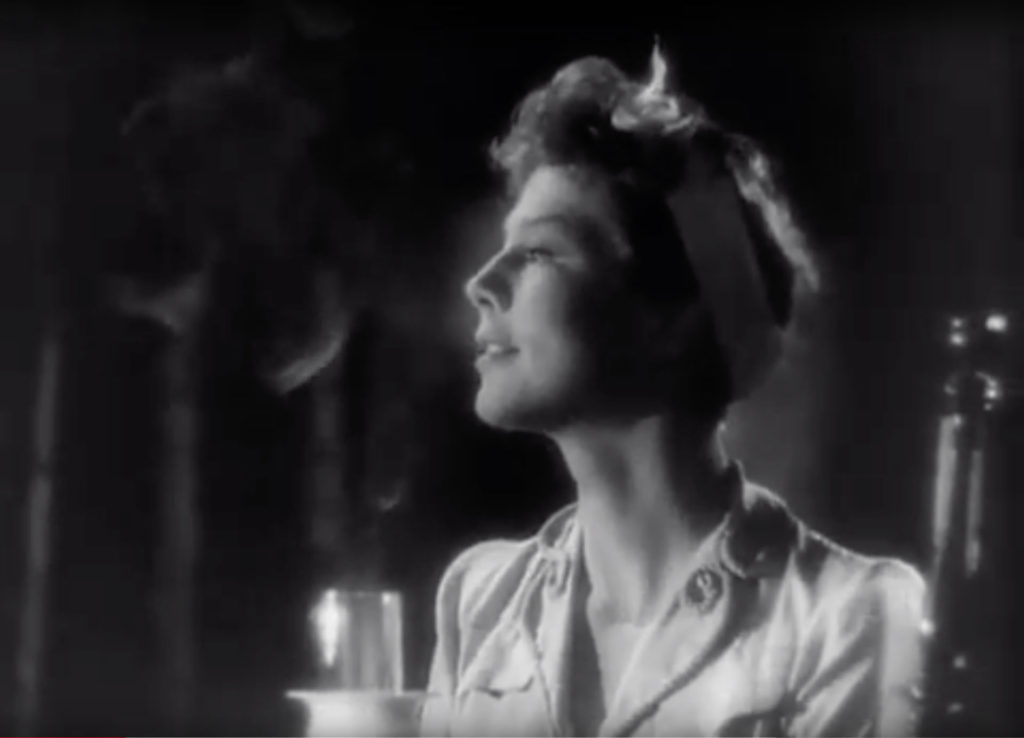
Top photo: Torquil, Catriona, Joan, and Col. Barnstable chat in Catriona’s house.
Amazingly, Livesey never went to Scotland, where all of the exteriors for the film were shot; he had a nightly theater role in London. A stunt double had to play all of his scenes, while Livesey did the interior scenes in film producer and director Alexander Korda’s Denham Film Studios in drizzly Buckinghamshire).
The perfect screenplay
Pressburger famously wrote the screenplay for IKWIG in four days. Of the experience, he has said, “It just burst out. You couldn’t hold back.” Having watched the movie more than 20 times, I feel as though I know much of it by heart. It is one of those films in which every word fits perfectly, not one line sounds false, not one emotion is over-explained. The screenplay is integral to creating a fairy-tale that feels both ancient and modern. The words and music and scenery fit together inextricably.
World War II in the distance
Powell and Pressburger’s first film collaboration was The Spy in Black, shot at Denham Studios, with location work in England and the Orkney islands. The film was released in 1939, just three weeks before England again went to war with Germany. The Spy in Black was produced by Alexander Korda, for whom they made patriotic films during the early years of World War II.
IKWIG was released six years later, during wartime, and Powell and Pressburger subtly introduce the fact that some wealthy people benefited from the war machine, as the soldiers surely did not. It is made clear in the early scenes of the film, with the a wildly modernist montage of Joan’s nightmare on the train to the Scottish isles that she is actually marrying the Consolidated Chemical factory, rather than the chairman of it, Sir Robert Bellinger. Sir Robert is sitting out the war on the island of Kiloran, which he has rented from the down-at-the-heels laird himself, Torquil O’Neill. Torquil has served with the troops and is on leave when he returns to Scotland and meets the “elegant, brash, and quite self-satisfied” Joan. They stay with Torquil’s friend Catriona, whose home houses soldiers while her husband fights abroad.
“I’ve never seen a picture which smelled of the wind and rain in quite this way nor one which so beautifully exploited the kind of scenery people actually live with, rather than the kind which is commercialized as a show place.”
—Raymond Chandler
A film plot driven by Nature
Nature is a force, almost a character in the film. The power of nature seems to stand for the passion that Joan Webster cannot ignore. Not only do the mists, the storms, and the constant wind create a strangeness that feels as though time has stopped, but the plot also adds to the mysterious and elemental atmosphere of the film. Dances, songs, superstitions, and folklore add to the feeling that the Celtic past is alive. Everything is illuminated by Erwin Hillier’s ravishing black-and-white cinematography.
The film as a critique of materialism
What largely brought Powell and Pressburger together was a concern with English values and a hostility towards materialism, and Rank Studios backed their views. Before he even began the screenplay, Pressburger wrote that he wanted to make a film that was part of a “crusade against materialism” during wartime. He and Michael Powell had touched upon this subject in their film A Canterbury Tale, but IKWIG had quite a different palette for a serious criticism of society. Pressburger fashioned the story of Joan as a turning away from the materialism of her life in England at the factory to the real love and authenticity she found in the isles—especially what she learned from the locals during her stay on the island. She thought she knew where she was going; she changes course throughout the film and falls under the spell of both place and the man who embodied the spirit of it. Pressburger once said, “Kindness rules the world; not money,” and Joan, by the end, believes it.
A well-balanced filmmaking duo
Michael Powell was born in Bekesbourne, Kent (1905-1990) and in the beginning of his career he worked with the Irish silent-film director Rex Ingram and as a photographer for Alfred Hitchcock.
The Edge of the World (1937) was Powell’s first major project, and it feels like a documentary–about a dying way of life on a Scottish island (based on St. Kilda, but shot on Foula, one of the Shetland islands). A review of the film in the Guardian admired the “fog-bound world he conjures up, and the wonderful cast of characters he encounters, from grumpy landowners to enterprising journalists…”
Powell was introduced to Hungarian expatriate Emeric Pressburger in London by Sir Alexander Korda. Pressburger had moved to England in 1935, after working with some of the most prominent filmmakers in Germany, including Max Ophuls and Robert Siodmak. Although Powell had a brief detour in Hollywood (where he directed the 1940 Academy Award-winning film The Thief of Baghdad), by 1942 he was back in England and formed a production company called the Archers with Pressburger.
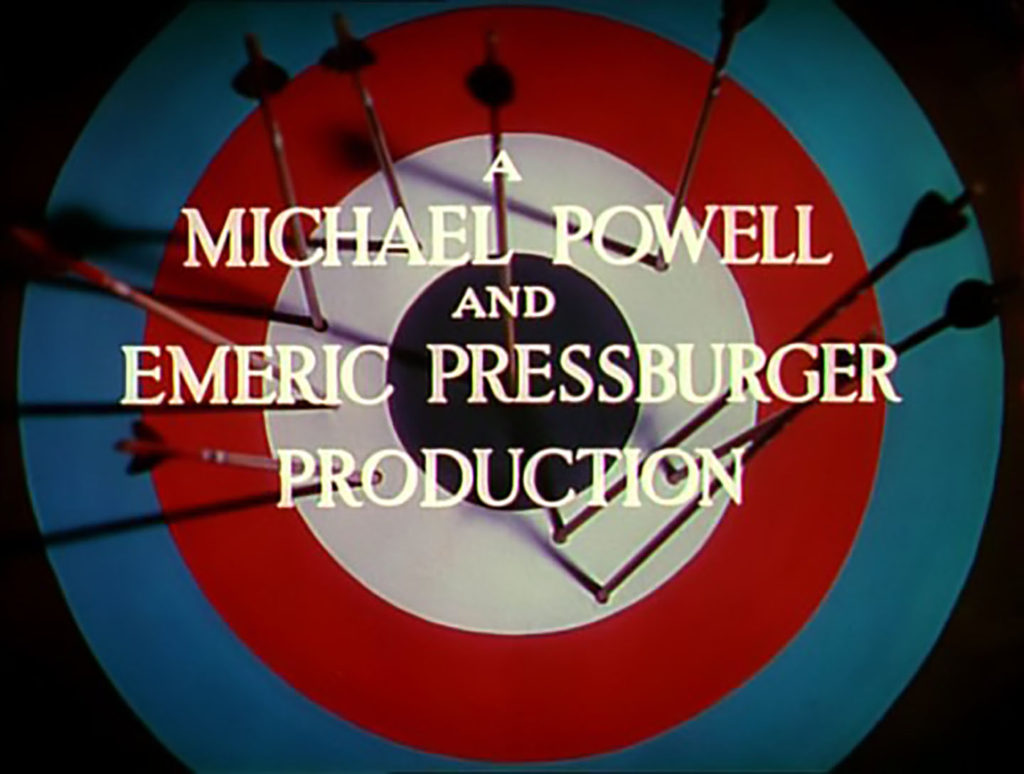
Over the next 15 years, the company made 14 films, using the credit, ”written, produced and directed by Michael Powell and Emeric Pressburger.” Other wonderful films they created include 49th Parallel (1941), A Canterbury Tale (1944), A Matter of Life and Death (1946), Black Narcissus (1947) The Red Shoes (1948), Gone to Earth (1950), The Tales of Hoffmann (1951), and many more.
The Archers were thrilled to get Wendy Hiller as their star in IKWIG. They agreed that she was perfect for the headstrong careerist Joan, who must learn to follow her heart rather than her head. Other actors were up for the role of Torquil, including James Mason, but they cast Roger Livesey, a Welsh stage and film actor.
The film’s dream cast
The cast seems to come straight out of the Celtic past (although most were not Scottish). Besides Hiller and Livesey, who was Welsh, it features Finlay Currie as Ruairidh Mhor, the owner of the boat that Joan plans to ride through the storm to Kiloran; Captain C.W.R. Knight as Colonel Barnstaple, chasing the falcon he named for Torquil; the incomparable Pamela Brown as Catriona Potts (with whom Powell fell in love; they lived together until her death in 1975); and a very young Petula Clark as Cheril, the strangely composed and sophisticated daughter of Torquil’s friends. I must make special mention of Nancy Price as Mrs. Crozier, who represents all the best of the traditional ways of the island.
Influence of the Archers, from iconic filmmakers to just plain fans
The influence of the work of Powell and Pressburger is deep and vast. From Josef von Sternberg to Bertrand Tavernier to Wim Wenders to Akira Kurosawa to Roman Polanski to many other directors, actors, and writers, their string of films have inspired many. Scorsese told Michael Powell thatSteven Spielberg, Paul Schrader, Francis Ford Coppola, and Brian De Palma were all influenced by his films. “We would talk about [Powell’s] films in Los Angeles often,” he said. “They were a lifeblood to us, at a time when his films were not necessarily immediately available. He had no idea this was all happening.”
Another person inspired by IKWIG was writer Nancy Franklin, who took off for Mull and environs after she saw the film. A1994 documentary directed by Mark Cousins followed her in a subsequent trip. Included in the documentary are interviews with members of the cast, as well as visits to the hotel in Tobermory where parts of the film were shot and a peek into the eerie interior of Moy Castle, which its powerful inscription that seals the fates of Joan and Torquil.
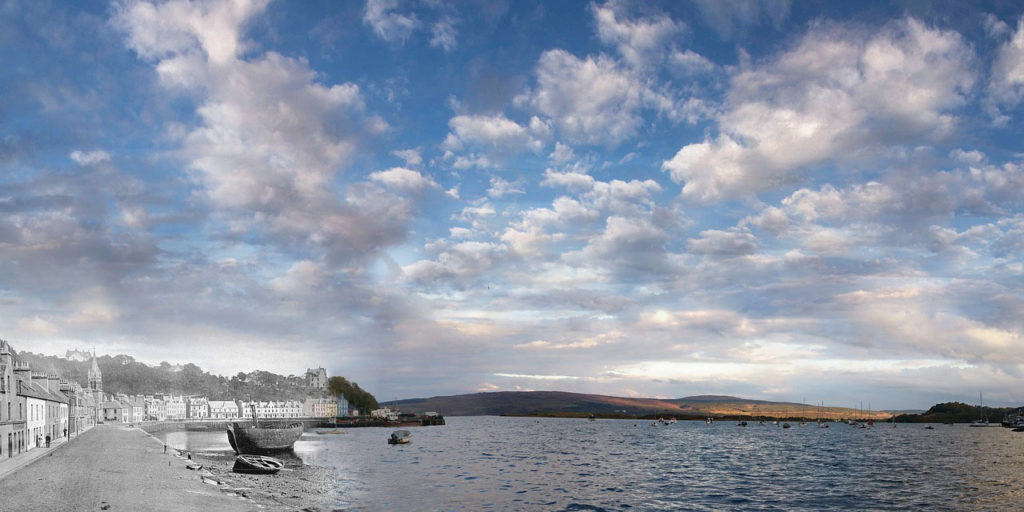
I often meet people who are fans of the film. I remember when I worked for the public television station in New York City in the 1980s; I would chat with the film programmer there, and we shared our private dreams of showing the film on television as often as possible. She did, in fact, regularly schedule the film, to the delight of not all, but many.
My film journey
Watching the Powell/Pressburger classic in the place it’s set (the island of Mull) gave it a darker, more subversive slant….
—Peter Bradshaw, The Guardian, Aug. 2011
I visited Tobermory on Mull in the 1970s, inspired by seeing the film. There are many places in the Western Isles that could work as background for the film—moody, foggy, and stormy weather is the natural state for the isles. I met a young couple in Tobermory who had a boat, and when they heard why I was there, they kindly offered to take me near the whirlpool at Corryvreckan, located between the islands of Jura and Scarba (the island called Kiloran in the film is Colonsay, off the south coast of Mull). I still remember sitting in the fading light as I looked off towards Corryvreckan, thrilled to reach my destination.
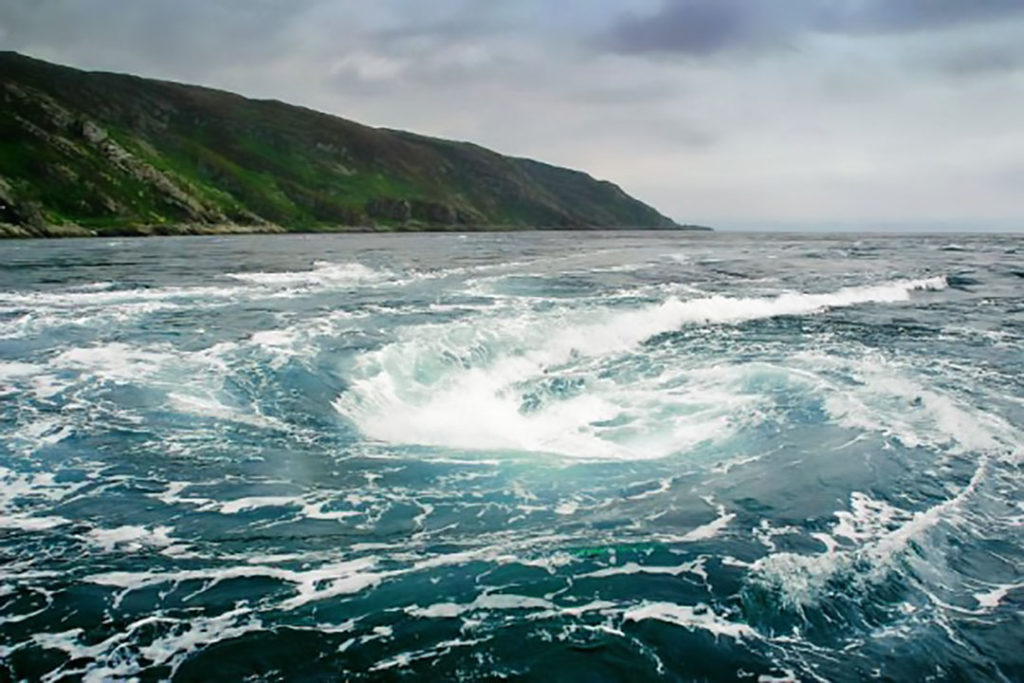
Filmmaker Martin Scorsese has written that he was “overwhelmed by [IKWIG’s] illustration of love laced with mysticism.” And after he screened the film for his longtime film editor Thelma Schoonmaker, she was so impressed that she married Michael Powell (in 1984). Two years after they tied the knot I took a new boyfriend to a screening of the film at the Museum of Modern Art in New York City on a cold winter night. I furtively observed him as Joan fought to overcome her fate and finally surrender to the power of love, finding her true self in the process. After the lights came on, I asked my date how he liked the film, and he responded with a pretty accurate but over-the-top Scottish accent. My fate was sealed. Reader, I married him.
The Powell and Pressburger Collection: 11 of the duo’s films, including IKWIG

Michael Powell and Emeric Pressburger’s I Know Where I’m Going!: The Criterion Collection DVD, the film in all its glory….

A Life in Movies: An Autobiography of Michael Powell, “a fast-paced atmospheric ride that sheds new light on the early days of the film business.”

Arrows of Desire: The Films of Michael Powell and Emeric Pressburger, by Ian Christie, with a Foreword by Martin Scorsese


Love this….now I am looking for a way to see the film! Thanks
It’s available for rental on Amazon Prime. Glad you liked the post.
Love it. Thanks for this. Will certainly see this film.
Watch it alone, wrapped in a blanket, with a glass of wine, xxxxxx
Love this love letter <3